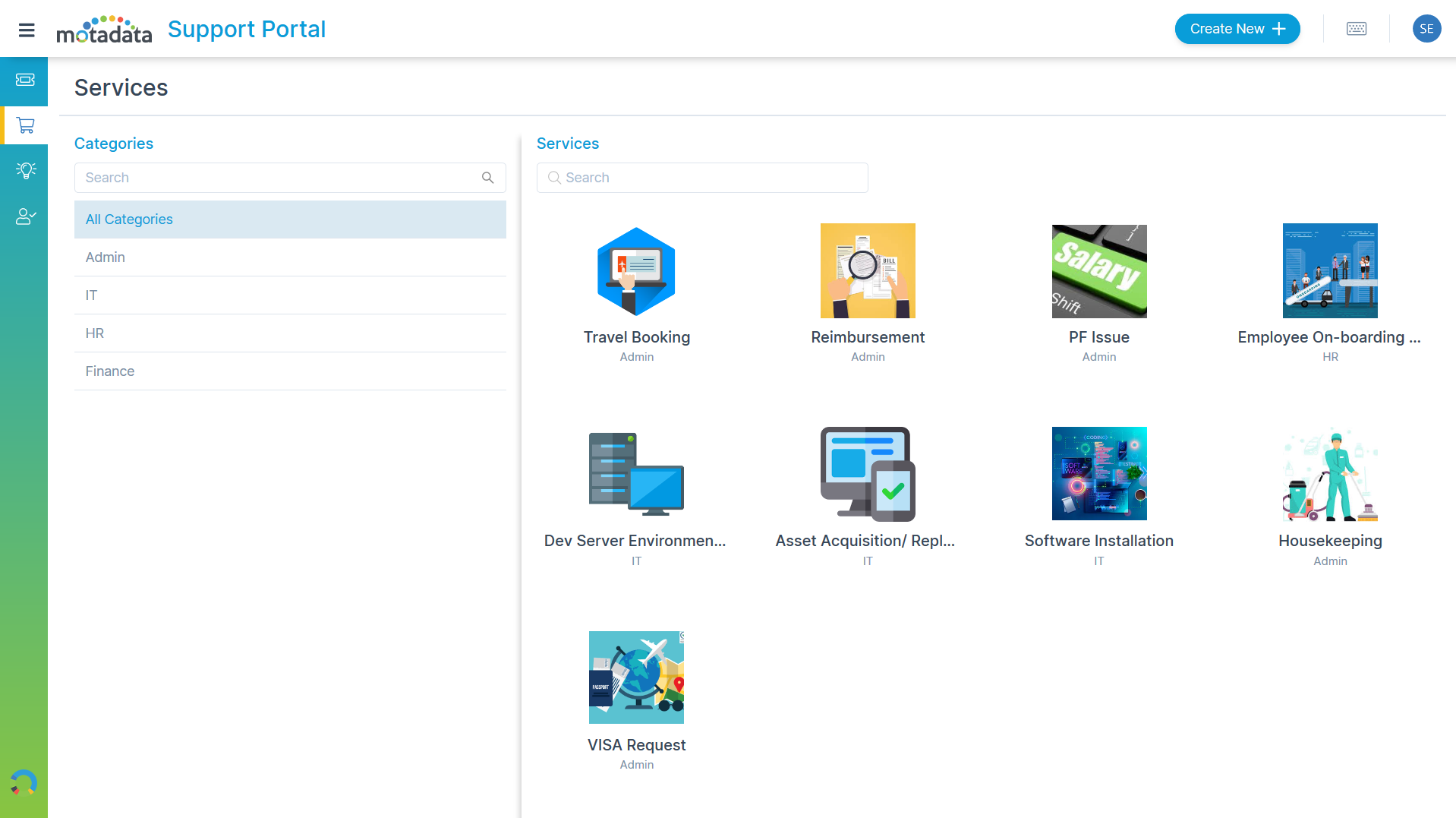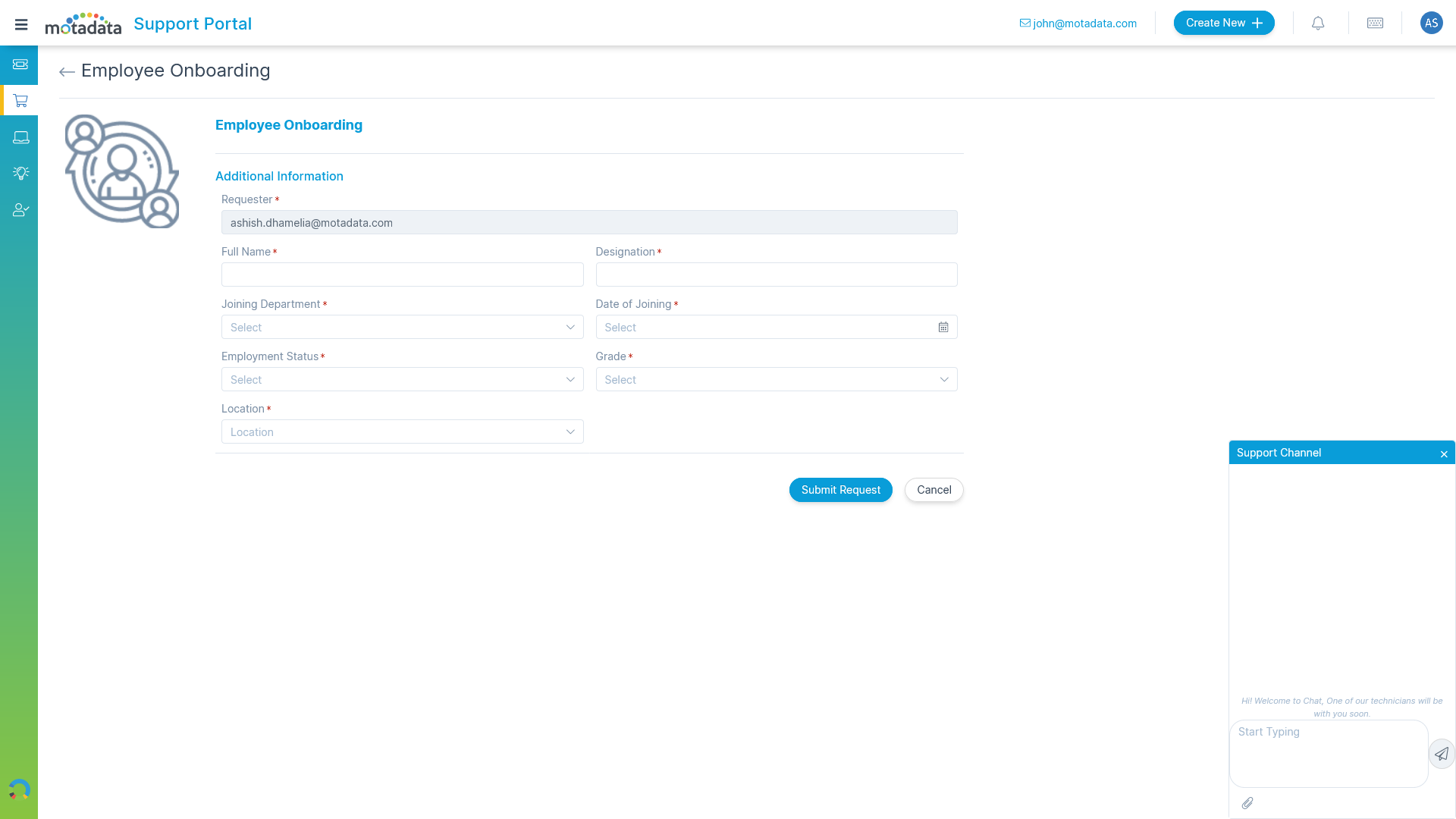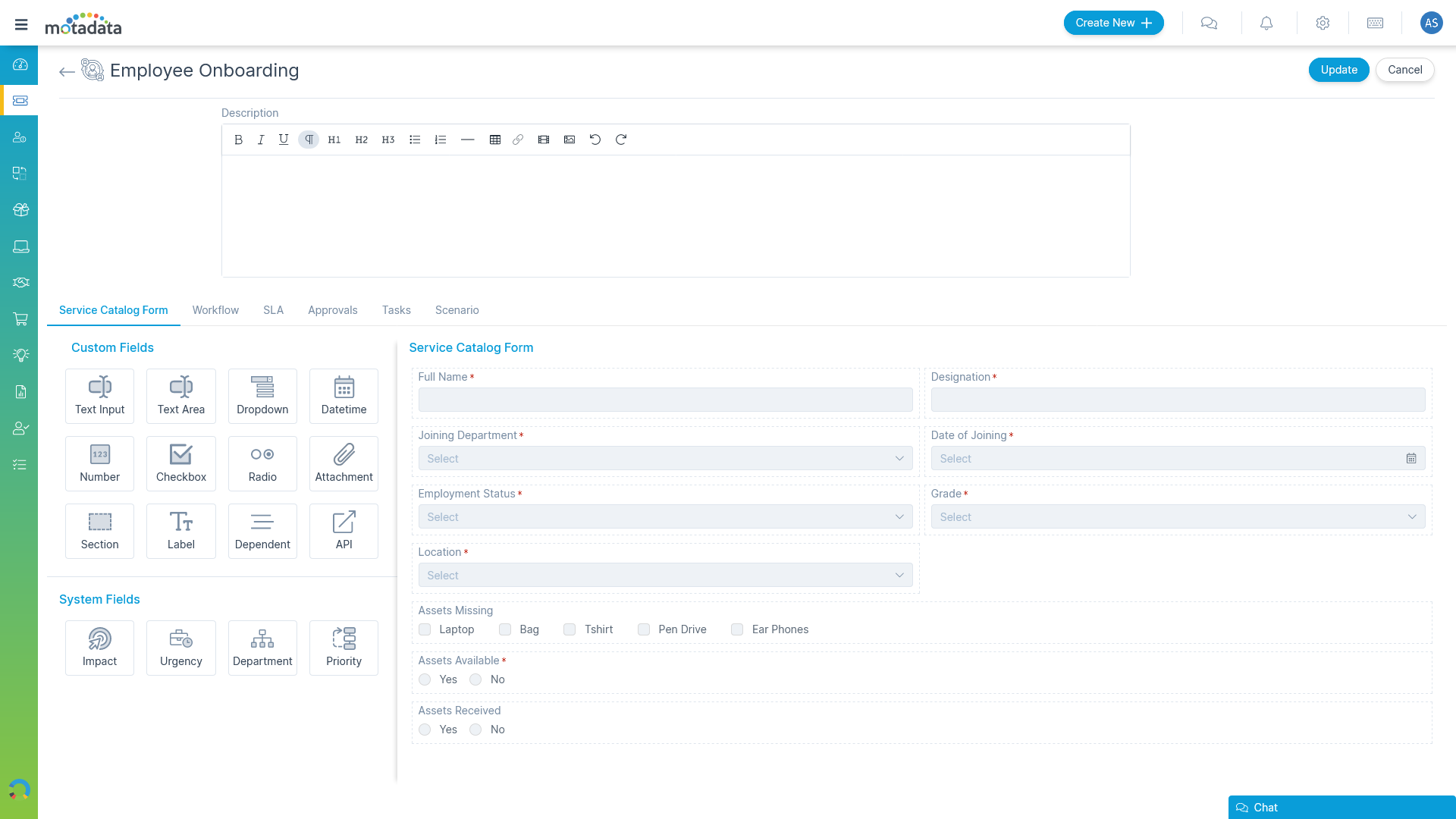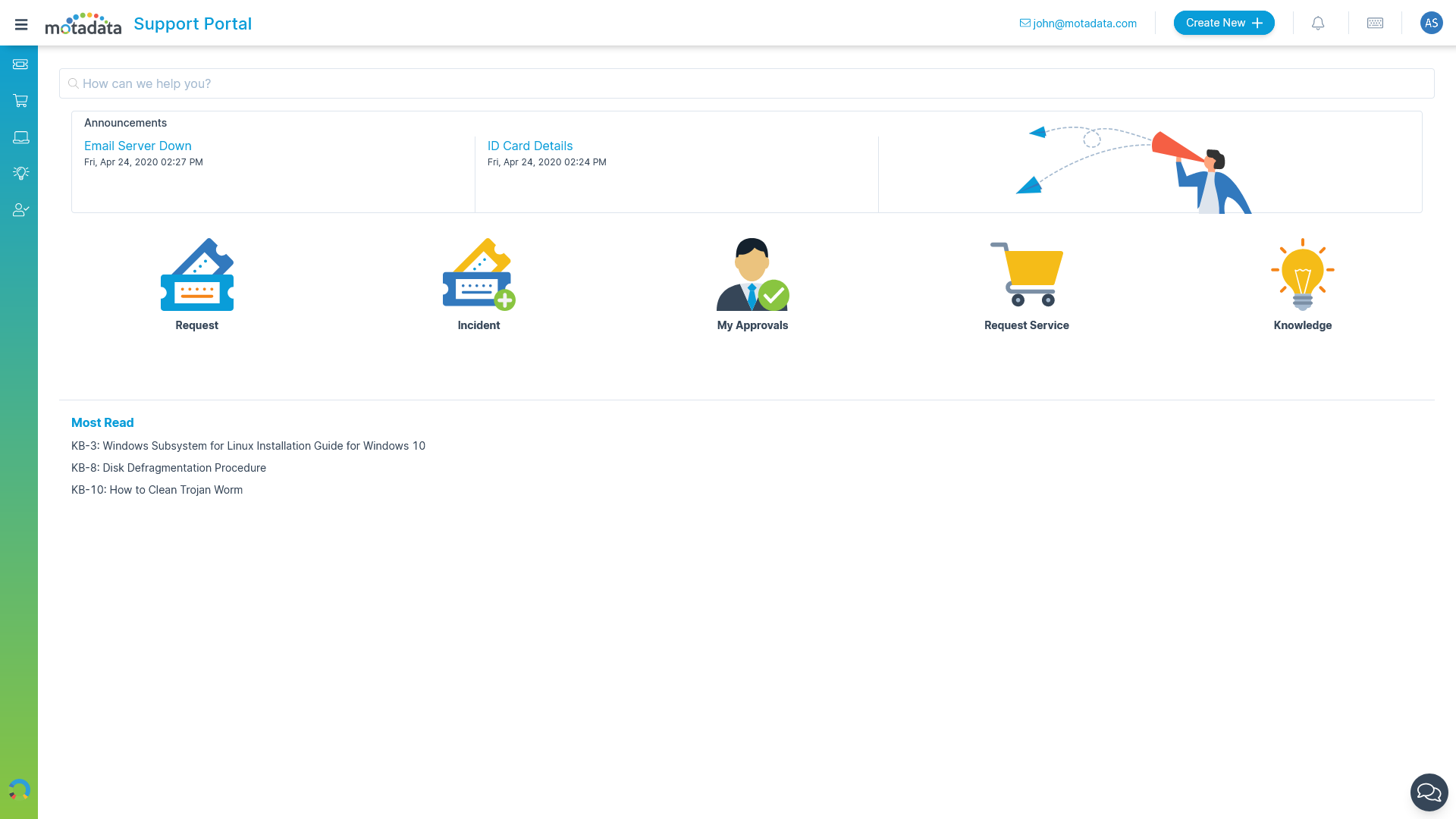Redefine Customer Experience with Service Catalogs
The ServiceOps ITSM Tool comes with a Service Catalog that Empowers Organizations in their Digital Transformation Initiatives. It Simplifies the Process of Delivering Products and Services through an E-commerce Style Engagement and Eliminates Silos, Bringing more Transparency, and greatly Enhancing Customer Experience through Self-service.

Build a Digital Enterprise
Adopt digital transformation and launch a wide range of services across the organization for better and faster collaboration through next-generation Service Management.
- Leverage 100+ pre-built service templates for IT and non-IT services
- Design end-to-end services using a drag and drop wizard
- A unified platform for IT, HR, Facility, Marketing, etc.
- Track SLA to increase the efficiency of your service delivery
Key Benefits
- Faster Service Delivery
- Better Customer Experience

Anywhere, Anytime – The Future of Communication with Multi-Channel Self Service
Empower your users by offering services any time anywhere through multiple communication channels like a web-based self-service portal, mobile app, chatbot, email, SMS, call, etc.
- Boost productivity with an intuitive self-service portal
- Allow user to access accurate knowledge base at every stage
- Publish announcement with ease
- Multi-language self-service for a seamless experience across different geo-locations
- Restless assistance with virtual agent and chatbot
Key Benefits
- Cost Savings
- Improved Availability and Efficiency
- Improved Customer Satisfaction/User Experience

Explore Endless Possibilities with Accelerated Automation
Effectively manage all service requests and improve IT service delivery with robust workflow automation.
- Ready to use 100+ pre-built automation templates
- Automate end-to-end cross-domain business services
- Bring value to the business with action bot-based architecture
- Enhance productivity with a zero-touch workflow automation engine
- Route service requests to the right team with the power of AI-based automated assignment
Key Benefits
- Improved Customer Experience
- Lower Expenditure
- Enhanced MTTR

Maximize Your Service Desk Adoption with Mobile App
Technicians can effectively engage with service requests from a mobile device and perform all the necessary actions required to deliver the promised services.
- Three-pronged approach to provide better control to the requester, approver, and technician
- Manage all the IT and non-IT service requests from an intuitive interface
- Manage the end-to-end life cycles of service request
- Optimize time and resources with on the go approvals
- Let your users be self-reliant with a knowledge base on the mobile app
Key Benefits
- Better Customer Experience
- Lower Expenditure
- Optimized MTTR
Improve Your
Service Operation By 30%
Other Features
Aim for 100% Customer Satisfaction by Providing a familiar E-commerce-like User Experience to Present all Available Services through our IT Service Catalog.
Ebook
IT Service Desk, A Complete Guide
A Guide to Supercharge your IT Service Delivery.
Other ServiceOps Modules
Explore ServiceOps
IT Service Management Solution that is Easy to Use, Simple to Set Up, and has Everything you Need to Provide a Seamless IT Service Delivery Experience.
.
Try ServiceOps for 30 Days
Download our software free of cost for 30 days
Schedule Demo With Our Expert
Book a slot in our calendar and experience ServiceOps live.
Do You Have Any Questions? Please Ask, We Are Ready To Support
If your question is not listed here, please feel free to reach out.
A service catalog is a centralized database that contains up-to-date information on active IT service offers. A service request is a formal request made to the IT service desk by an end-user to initiate a service activity. Service requests are processed by using standard, predefined workflows to deliver services within agreed-upon service levels.
There are several sorts of service requests, including, but not limited to, requests for information e.g., information on leave policy, requests for access e.g., access to a particular document, and requests for resource supply e.g., request for a new phone, laptop, or software.
Using a service catalog to present all available services to users can provide many benefits to an organization. Service catalog helps promote self-service amongst users thus reducing management costs and improving the user experience by providing detailed information about their requests and the status of their request.
The service catalog acts as the central point of access for all products and services offered by IT or other departments, thus enabling central management of all requests. It offers more control in terms of deciding who can access what services based on their roles and responsibilities. Service catalogs enable standardization of service delivery by offering a clear picture of what a user can expect from each service item.
A good service catalog minimizes the time it takes for the user to access and request services, allowing them to be handled more effectively. Finally, it enhances the business benefits by thoroughly aligning the IT services with the business strategy of the organization.
There are two types of service catalogs based on their views – Business or customer service catalog and technical or supporting service catalog.
The business or customer service catalog offers information on all available IT services that are provided to the customers. IT offers access to the service catalog to the various business departments and business processes that they support.
The technical or supporting services catalog offers information on the provided IT support services. This catalog is linked to the customer-facing services and configuration items, as well as additional supporting services that are needed to perform the service.
The purpose of service catalog management is to offer and maintain a single point of accurate information about all operational services. Service catalog management guarantees that service catalogs are widely available to those who have access to it.
The goals of service catalog management are to manage the information contained within the service catalog and to ensure that the information is accurate and reflects the current details, status, interfaces, and dependencies of all available services. Furthermore, service catalog management makes sure that the service catalogs are made available to authorized users in a way that facilitates their effective and efficient use of the information and supports their evolving needs.
